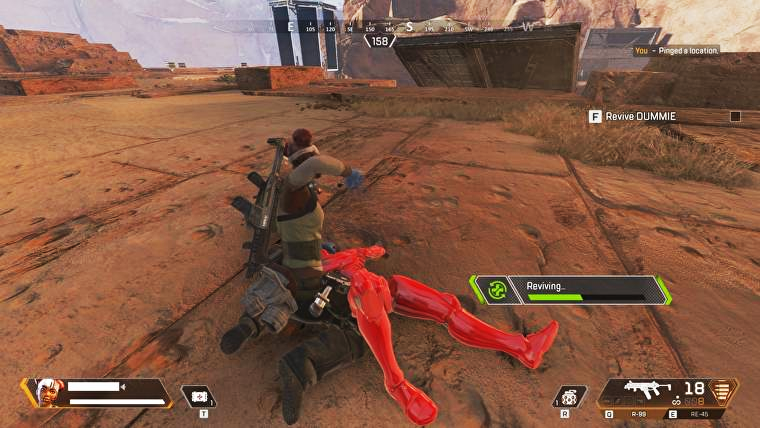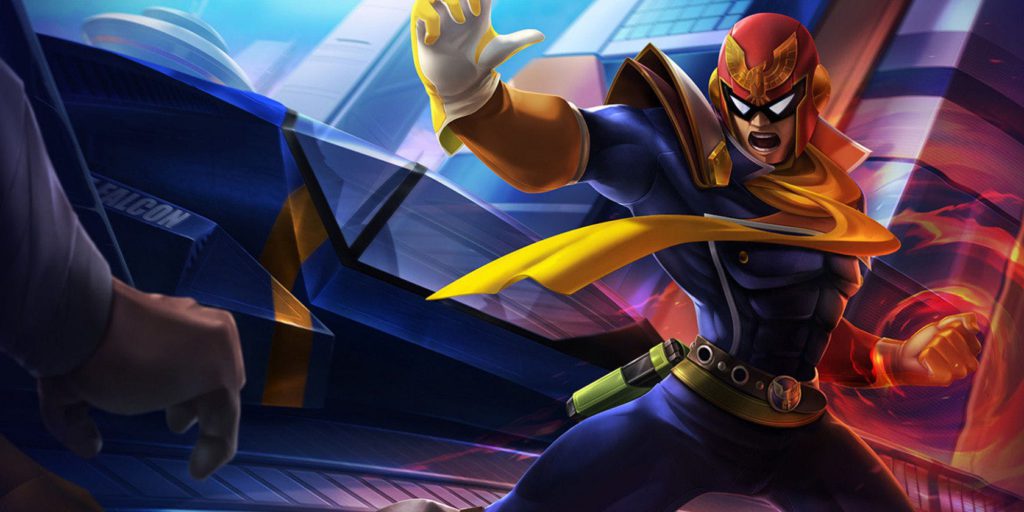

Death is a natural part of life. Life giveth, life taketh, and life messeth with you a little bit along the way. It’s always sad when a game series forever concludes, but all good things must come to an end.
But what about those series that never received a definitive end where the protagonist walks into the sunset as the main theme starts to play? I mean, that’s how my life is going to end (I have rehearsed it repeatedly), but there are many series of games that received no such luck. Today, let’s take a look at what games should’ve gotten another in their series, or should make a return, or simply added truth to the saying that the good always die young. Or, worse yet, are frozen in suspended animation until their publisher decides to use them ever again — truly, an even more twisted fate.


Where did F-Zero go?
It’s a well-known franchise, right? It’s not exactly a semi-obscure or niche title like the other entries on this list. The most recent F-Zero games were F-Zero GP Legend and F-Zero Climax in 2004. That was 15 years ago! While it is fitting that the last game in the series was called F-Zero Climax, I don’t think the franchise deserved to end there. And the worst part is that it never officially ended, Captain Falcon’s just been waiting on the bench this whole time with his helmet in his hand, losing more and more of its grip on it over the years. The only thing still giving him life is the occasional Super Smash Bros. invite. The force behind each of his Falcon Punches is the accumulated angst and sorrow of not being in the spotlight since 2004. He is a warrior who has been wronged, walking the sour wastelands of irrelevancy.
Perhaps it’s arguable that a new F-Zero game doesn’t seem it like it would sell as well as a Mario Kart, so maybe Nintendo figures, “Why have two racing games?” But they’re so different! F-Zero is such a well-known franchise, too, so why would you not? To quote Captain Falcon: “C’mon!”
While the Nintendo 64’s premier kart racer may have been considered to be Mario Kart 64, and its solid alternative was the always enjoyable Diddy Kong Racing, there was a third child, a stepchild who received the blue spike shell of under-appreciation (the worst blue shell of all). Published by Atlus and released in 1999, Snowboard Kids hit the console slopes as a quirky kart racer for up to four friends or enemies to play together. This game was clearly inspired by the Mario Kart series with its arcade racing and combat items, but just because it’s similar doesn’t mean it’s not still enjoyable. Diddy Kong Racing set itself apart with inventive mechanics, such as overworld exploration, and different vehicles to race with via planes and watercrafts — dynamic racing that Mario Kart didn’t adopt until many years later.
Snowboard Kids didn’t set itself apart so much with innovative gameplay features, rather with its own unique style. The soundtrack itself, in my opinion, is better than either of the other major kart racers mentioned. You can also drop frying pans onto other racers and crush them. You know, just like real snowboarders do! As a kid, I actually thought the frying pan was a bed pan for the longest. That would’ve been much more interesting (insert comment about yellow snow here).
But, in all honesty, while the racing was fun for sure, the best part about the game was the ski lift. At the end of each lap, you had wait a few seconds for a ski lift that goes back to the top to pick you up. However, if timed right, you could swoop in and shove your friend who was next in line for the lift out of the way, taking their spot at the last minute. There has been no multiplayer experience since this that has quite given this particular magical feeling of angering your friend.
Snowboard Kids 2 released shortly after and was even better than the first. While no one can compete with the success of Mario Kart, it was enjoyable to have an alternative if you felt like enjoying some delectable kart-racing action, but not with the omnipresent red-capped plumber. Mario’s cool, but he’s like that one friend who comes over to play a little too often, you know? Sometimes you make your mom answer the door to tell him you’re not home. Then you feel a little bad, but can’t take it back. But it’s okay, he’ll come back again later anyway. Except he was just coming over to tell you that he was moving away tomorrow and wanted one last afternoon together before he said goodbye. Wow, and you denied him that? That’s okay, I’m sure he found a better friend wherever he moved to.
Speaking of departures, there was also apparently a Snowboard Kids title for the Nintendo DS called SBK (you know, like Snowboard Kids, but edgy). Unfortunately, the style seemed very much changed from the original series, and not in a great way — so yeah, one of those sequels. And that was where the franchise faded away.
So, until Snowboard Kids 3, I’ll just have to wait patiently and resort to shoving people out of the way onto ski lifts in real life.
While Mario Kart was transparently a direct influence to Snowboard Kids, there are some series that are a little more original. Road Rash, debuting on the Sega Genesis in 1991, was one of the first prominent vehicular combat games, featuring renegade motorcyclists racing along various highways.
So here we have another racing game, but slightly different in theme. Sure, it was kind of like Mario Kart in that there was racing and there were items you could use to harm other players… but, well, instead of banana peels, Road Rash had fists… and not only that, blunt force weapons, to um… brutalize other racers with, and knock them off their bikes… at 120 miles per hour. Sometimes the bikes exploded… it got pretty messy, arrests were made, parents were called… so yeah, pretty much the same as Mario Kart.
The emphasis here is that there have been few games like the ones in the Road Rash series. For the most part, this type of gameplay came and went with the franchise. You did have some vaguely similar titles appear here and there — particularly, an indie game for the PC called Road Redemption. I played this game and enjoyed it, as it does scratch some of that classic Road Rash itch, but it’s a little too brutal for my taste, moreso than its inspiration.
Also, in Road Rash, you could get huge amounts of air, both on or off your motorcycle — upon crashing into something such as an oncoming car, you would get sent flying thousands of feet into the air like a winged dove. I haven’t found a game with that sort of injured-outlaw-hurling-through-the-sky aerial experience. I guess, like with Snowboard Kids, for now I’ll just have to chase that thrill by replicating it in real life.
And now for something very different. Jetting forward to the original Xbox, that console was the first of its brand and the only American attempt at a console on the market, it needed to prove it had a diverse library, with something for everyone. Enter Japanese game support with Jet Set Radio Future
.It’s kind of like Tony Hawk’s Pro Skater, except if Tony Hawk had recently gone to Japan, and was in rollerblades instead of on a skateboard, and had a fever dream about it all shortly afterward.
So, this is a favorite game of mine. It’s such a unique blend of innovative gameplay, irrepressibly vivid style and attitude, and an unmistakable soundtrack as you roll around downtown Shibuya in Japan, doing rollerblade tricks off rails and walls, and spraying some really stylish and fresh graffiti along the way. It’s actually a sequel to Jet Set Radio on the Dreamcast; hence Future. However it was a major redesign compared to JSR. And unlike SBK, JSRF actually improved on its predecessor tenfold, in my opinion — largely due to the removal of timed gameplay. Why have timed gameplay in an open-world game that you’re supposed to explore? Combined with a remixed new soundtrack and more streamlined gameplay mechanics, JSRF was a great sequel.
There has been no Jet Set Radio game since — the closest game is Hover, which is directly inspired by the JSR series, even going so far as to have JSRF’s composer create a few tracks for the game.
I think even an HD treatment of JSRF would be a great idea. It would allow its publisher to test the waters and see if there’s financial reason for the go ahead on a sequel.
And now, jumping off from Jet Set Radio Future, let’s go to a game about the future, the present, and the past. A classic adventure throughout the millennia where heroes across the ages unite to save the planet, Chrono Trigger is a well-beloved game and considered one of the best RPGs in video game history.
Since its release, its legacy hasn’t been entirely barren — there was Chrono Cross on the PlayStation. Technically a sequel to Trigger, it inherited certain gameplay elements and a few narrative themes, and was a solid game on its own, most notably with a soundtrack as beautiful as any other game. In large part, though, Cross featured new characters and to many fans did not feel like a direct, true sequel (I personally played Chrono Cross first, so I don’t share that burning resentment toward it that some of those who played Trigger first do, but I get it). It featured travel between parallel words instead of time travel, the focus of the first game. I personally thought that this was a pretty neat take on it on the series, since, you know, “space-time” — following up time travel with space distortions in the form of parallel worlds. So it kind of plays into each other, but at the same time, there is the “stop trying to be clever and just give us more time travel” aspect to it all.
In between the two games was a Japanese-only title on the SNES called Radical Dreamers, which serves as something of a loose bridge between the chronology of the two games, but it could be considered more of a side project in the franchise than anything, kind of like a rough draft of where they wanted to take things.
So, while Chrono Cross was enjoyed by many, fans never got a direct time-traveling sequel to Chrono Trigger. And many years later, they still yearn for it.
In short, this revival is the big one. Whether it’s Chrono Trigger: Remake or Chrono Trigger 2, this is the one that everyone wants, and it’s about time it happens. And if you think that was the end of the chronology puns in this entry, then… well, maybe you’re right.
If any game deserves a new sequel, though, it’s Chrono Trigger — the demand is there, it can be done, and it deserves to be made a reality. But as with every entry on this list, that’s for the future to decide.
Get ready for a week where gaming meets sustainability! The Earth Appreciation Festival 2025 runs…
Turn dull city corners into lush green escapes with *Urban Jungle*, a cozy puzzle game…
Ready to set sail? *Trident’s Tale* just dropped a free demo on Steam, giving you…
Robobeat’s spring update cranks up the intensity with the new Virus Room—a brutal, high-stakes challenge…
Steelkrill Studio, known for horror games, is taking a bold leap into RTS with *Medievaly:…
Build a wacky Martian theme park, abduct Earthlings, and entertain quirky alien guests! The "Mars…
This website uses cookies.